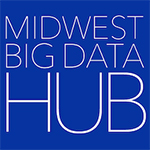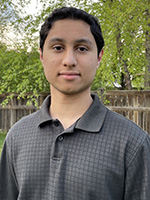By Raleigh Butler
This story is part of a series on coronavirus research in the Midwest region. To explore other NSF-funded research addressing the COVID-19 pandemic, please visit the COVID Information Commons, a project of the four NSF Big Data Innovation Hubs.
In early 2020, the USA was brought to a standstill when stores, schools, and other everyday locations closed to help fight the COVID-19 pandemic. This piece will discuss a variety of RAPID awards funded by the National Science Foundation in the Midwest to support research to mitigate a variety of education-related pandemic challenges. Links to the NSF award abstracts will be linked in the article.
Remote Learning Research
A common topic for early school-related COVID-19 research was the exploration of remote or online styles of teaching and learning. In the early stages of the pandemic, it was unclear when schools would be able to reopen. Teachers and administrators were attempting to learn from prior work on remote learning at all levels, kindergarten through college.
For instance, in a project led by researchers from the Chicago Board of Education, researchers discuss the impact of public school students studying computer science remotely. Issues broached include access to the appropriate technology outside of school and possible socioeconomic variables at play. An award to the University of Kansas touches on a similar topic at the graduate level. This work is STEM-focused, addressing COVID-19-related challenges in engineering. One question the researchers ask is: “To what extent do the relationships between perceived e-mentoring support and student outcomes vary by demographics, disciplines, and institutional characteristics?”
A project at the University of Nebraska–Lincoln explores this topic from the faculty perspective. The project goal is described as “to identify cognitive and emotional themes concerning faculty and staff adaptability and community engagement during a crisis compared to those found under typical teaching circumstances.“ Adaptability is a key theme here—professors, regardless of their experience using online-teaching technology, were expected to learn how to do so. In Illinois, the Chicago Public Schools did its own research on forced remote learning and “mitigating the impact” of the sudden transition from in-person to online learning.
Remote Learning Activities
Researchers at the University of Minnesota–Twin Cities put an interesting spin on remote learning with their work on virtual reality (VR). Virtual reality allows learners to immerse themselves in a different world using a pair of electronic goggles or a headset. This device is used to portray a different world, like being “inside” a video game. The Minnesota researchers recognize that “many people, especially young adults, typically being used to active social life, can find this physical/social distancing leading to social isolation. Unfortunately, social isolation is strongly associated with negative outcomes for mental health and therefore represents a serious threat to long-term compliance.” The project aims to promote web-based VR as a way for people to interact safely in a shared environment, despite not actually being physically together.
The need for activities—especially for young learners—is addressed in Indiana University Bloomington’s research project. They have launched a Facebook group called CoBuild19, which works on making STEM activities more accessible to children.
Remote learning has also been addressed in an award granted to the Georgia Research Alliance. This award focuses on “ALOE”—Adult Learning and Online Education. Given the current state of the pandemic, it is immensely difficult, if not impossible, to continue education safely in person. The National AI Institute for Adult Learning and Online Education (AI-ALOE) addresses this by working to move adult-education opportunities online.
Mis/Disinformation
There’s a lot of information available about COVID-19. Some is real, some is misinformation (simply incorrect), and some is disinformation (incorrect with the intent to deceive). Many people have trouble deciding what sources to trust. A project led from the University of Michigan–Ann Arbor plans to follow a sample of university students. The premise of the research is to determine “whether and to what extent people follow recommendations and change behavior.”
Teaching About the Pandemic
Teaching about the pandemic itself is important. A relevant award is an exploration by researchers at the University of Nebraska–Lincoln into using popular media to educate youth on COVID-19-related issues. By using illustrated media such as comics to raise youth awareness of accurate coronavirus-related information, perhaps it’s possible to lessen the mis/disinformation discussed in the University of Michigan’s work. The project proposes assembling “an integrated package of high-quality, widely accessible media and other outreach materials designed to engage middle school youth, educators, and libraries in learning about viruses in relation to COVID-19.”
The researchers, wanting the material to be accessible, propose that “[t]hese resources will be disseminated broadly and at no cost to youth and educators of all kinds, including schools, libraries, museums, and other established networks for formal and informal science education.” Indeed, children’s lives are being altered drastically by COVID-19. It’s important that they know what is occurring to cause such alterations. In fact, the University of Missouri and the University of North Carolina at Chapel Hill collaborated to develop a curriculum for high school students. The curriculum covers epidemics in both scientific and social contexts.
Get involved
The projects described above were all funded by the NSF, which published a related story.
Contact the Midwest Big Data Innovation Hub if you’re aware of other people or projects we should profile here, or to participate in any of our community-led Priority Areas. The MBDH has a variety of ways to get involved with our community and activities.
The Midwest Big Data Innovation Hub is an NSF-funded partnership of the University of Illinois at Urbana-Champaign, Indiana University, Iowa State University, the University of Michigan, the University of Minnesota, and the University of North Dakota, and is focused on developing collaborations in the 12-state Midwest region. Learn more about the national NSF Big Data Hubs community.


